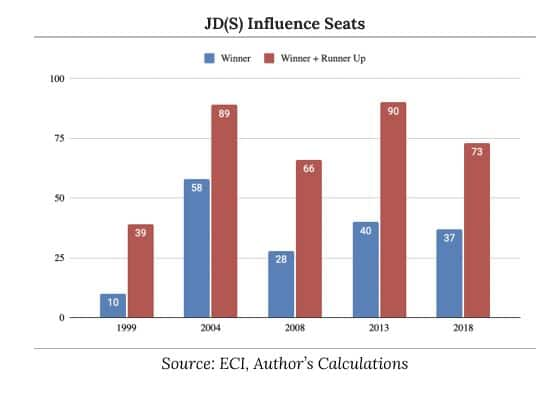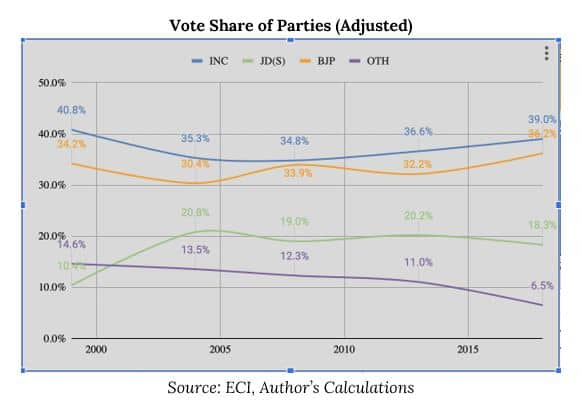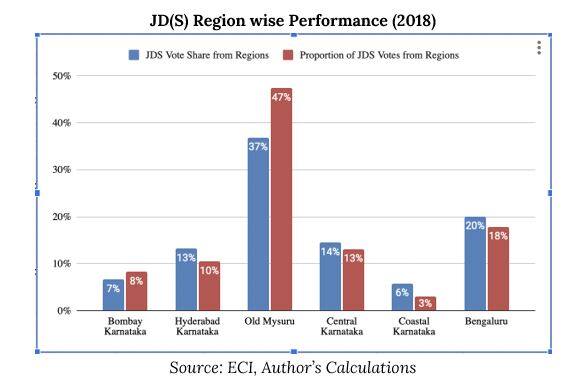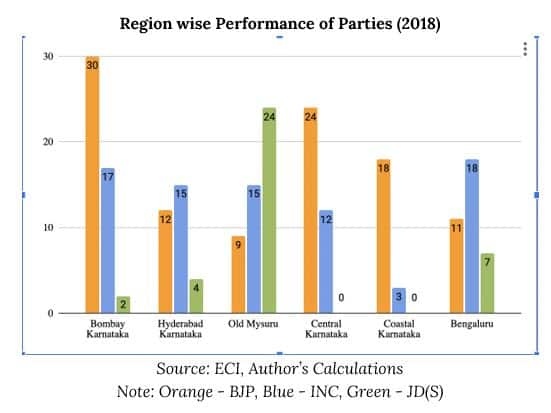



Amidst all the obsession over Bharatiya Janata Party and Congress, all eyes are on the performance of Janata Dal (Secular). Will it spoil the party of both Congress and BJP and force a hung assembly situation? Will it bargain hard for the top chair? Who will it choose as its bride - Congress or BJP?
In 2018, after a long spell in the wilderness, lady luck smiled again on former Prime Minister JD Deve Gowda’s family, which helms JD(S), when BJP fell short of majority by 9 seats. JD(S) with 37 MLAs held the keys to government formation and it allied with the Congress. Gowda’s son HD Kumaraswamy became CM but could last less than 15 months as few MLAs of ruling coalition resigned and joined the BJP.
In the past four elections, JD(S)’s average vote share has been around 20 percent and the seat tally around 40, forcing a hung verdict twice (2004 and 2018). JD(S) believes without their support no party can form a government in Karnataka.
JD(S) Victory Ruled Out
Though JD(S) claims that it will form the government, in reality the party and leadership is praying for a hung house again. JD(S) does not have a state wide presence. Its influence (where it has been in number 1 or 2 positions) is restricted to just 90 seats.
There are 154 seats which it has never won in the last three polls after delimitation. JD(S) got half of its total votes from just 39 seats in 2018. On 56 seats it scored less than 5,000 votes. On around 60 percent of the seats there is a direct contest between the BJP and the Congress.


A Vokkaliga-Southern Karnataka Party
JD(S) influence is largely restricted to Southern Karnataka, in the Old Mysuru and Bengaluru regions. 65 percent of the total votes JD(S) received in 2018 come from these two regions (47 percent + 18 percent).

It had the highest vote share amongst all parties in the Old Mysuru region (37 percent). In Bengaluru too, its vote share is decent, higher than its state average. In all other regions, its vote share was paltry in the range of 6-14 percent. It won 65 percent of its seats from Old Mysuru and another 20 percent from Bengaluru.

Vokkaligas, forming 11 percent of the population, have been backing JD(S) since its inception (47 percent Vokkaligas voted JD(S) in 2018). However, the party does not have any other anchor vote segment. Vokkaligas account for 1/3rd of its total vote share, along with Other OBCs, these two groups account for half of its vote share.

But JD(S) Holds Some Cards
There are 25 stronghold seats of JD(S) which it has won twice/thrice in the last three polls. This indicates a base level strength, a sort of minimum tally it could fetch in 2023 as well.
The average victory margin of JD(S) is higher than BJP and Congress at 13 percent. When it wins, it wins big; 57 percent of its seats were won by more than 10 percent victory margin.

On 23 seats it polled more votes than margin of victory, 14 were won by BJP and 9 by Congress, making JD(S) a kind of spoilsport for a party that falls short of the majority mark.
Why Congress Fears JD(S)
The primary challenger of JD(S) in Old Mysuru is Congress. So if JD(S) improves upon its historical performance, then Congress will need a better strike rate against BJP in other regions / rest of Karnataka. If it performs worse, then Congress stands to benefit.
If JD(S) performs better in Bengaluru then it damages the prospects of both BJP and Congress. Whatever minority community votes JD(S) gets is at the cost of Congress.
So will JD(S) emerge as kingmakers again? Only time and a hung assembly can reveal the answers.
Amitabh Tiwari is a former corporate and investment banker-turned political strategist and commentator. Twitter: @politicalbaaba. Views are personal and do not represent the stand of this publication.
Discover the latest Business News, Sensex, and Nifty updates. Obtain Personal Finance insights, tax queries, and expert opinions on Moneycontrol or download the Moneycontrol App to stay updated!